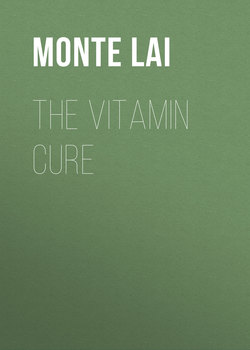Читать книгу The Vitamin Cure - Monte Lai - Страница 14
На сайте Литреса книга снята с продажи.
Оглавление5
VITAMIN B5 (PANTOTHENIC ACID)
Vitamin B5 is pantothenic acid. In 1933, Roger J. Williams discovered that an acidic water-soluble substance was essential for the growth and proliferation of yeasts. In 1939, scientists confirmed that the chemical structure of this acidic water-soluble substance was pantothenic acid and named it vitamin B5. Panto means “everywhere” in Greek, and pantothenic acid is a widely distributed nutrient in animal- and plant-based foods. In 1954, M. B. Hoagland and G. David Novelli found that vitamin B5 was the key precursor for the biosynthesis of coenzyme A, a cofactor that is essential for energy production in the cell and is one of the most important molecules for the survival of all living beings on the planet. Its prominent role in the life process equates to that of DNA. Coenzyme A allows the body to convert proteins, lipids, and carbohydrates from foods into energy. Energy sustains life. Without coenzyme A, no organism can survive on Earth.
What Are the Symptoms of Vitamin B5 Deficiency?
• The major symptoms of vitamin B5 deficiency are adrenal malfunction, dermatitis, enteritis, hair loss, and hepatic encephalopathy (liver disease causing a decline in brain functions). Various foods are rich in vitamin B5, so vitamin B5 deficiency is rare. Malnutrition and malabsorption are the main causes of vitamin B5 insufficiency.
Prevention and Treatment of Diseases
• Treatment. Vitamin B5 may decrease blood levels of LDL and triglycerides and increase blood levels of HDL. It may also mitigate the morning stiffness and pain associated with rheumatoid arthritis (102).
Which Food Items Are Vitamin B5 Rich?
Vitamin B5 is widely present in a variety of animal- and plant-based foods. Almost all kinds of foods contain vitamin B5. Animal-based foods like fish, eggs, milk, and other dairy products, as well as plant-based foods—such as vegetables, legumes, and whole wheat—are all excellent sources of vitamin B5.
This list of vitamin B5–rich food items is adapted from information provided by the USDA.
| FOOD | PORTION | VITAMIN B5 CONTENT, MG | % DAILY REFERENCE VALUE |
|---|---|---|---|
| Beef liver (cooked) | 3 ounces | 5.60 | 56.0 |
| Sunflower seeds | 1 ounce | 2.00 | 20.0 |
| Trout (cooked) | 3 ounces | 1.90 | 19.0 |
| Yogurt | 8 ounces | 1.60 | 16.0 |
| Lobster (cooked) | 3 ounces | 1.40 | 14.0 |
| FOOD | PORTION | VITAMIN B5 CONTENT, MG | % DAILY REFERENCE VALUE |
|---|---|---|---|
| Avocado | ½ | 1.00 | 10.0 |
| Sweet potato (cooked) | ½ cup | 1.00 | 10.0 |
| Milk | 8 ounces | 0.87 | 8.7 |
| Pork (cooked) | 3 ounces | 0.86 | 8.6 |
| Chicken (cooked) | 3 ounces | 0.83 | 8.3 |
Daily reference value of vitamin B5 is 10 mg according to the 2013 FDA food-labeling guidelines.
What Are the Recommended Dietary Allowances for Vitamin B5?
| 1–3 years | 2 mg |
| 4–8 years | 3 mg |
| 9–13 years | 4 mg |
| 14–18 years | 5 mg |
| 19 years and older | 6 mg (men); 5 mg (women) |
There is currently no known toxicity of vitamin B5 and no upper intake limit for vitamin B5.
Vitamin B5 Supplements
• Dosage. The most common dosages of vitamin B5 supplements are 300–500 mg.
• Cholesterol. Vitamin B5 may lower cholesterol levels in the blood. The suggested daily dose is 1 g.
• Rheumatoid arthritis. Vitamin B5 may ameliorate the symptoms of rheumatoid arthritis. The suggested daily dose is 1 g.
Safety Issues
• Side effects. High doses of vitamin B5 might interfere with the absorption of vitamin B7 by the intestines.
What Types of Drugs May Interact with Vitamin B5?
• Oral contraceptives. Oral contraceptives can lower the blood level of vitamin B5.
